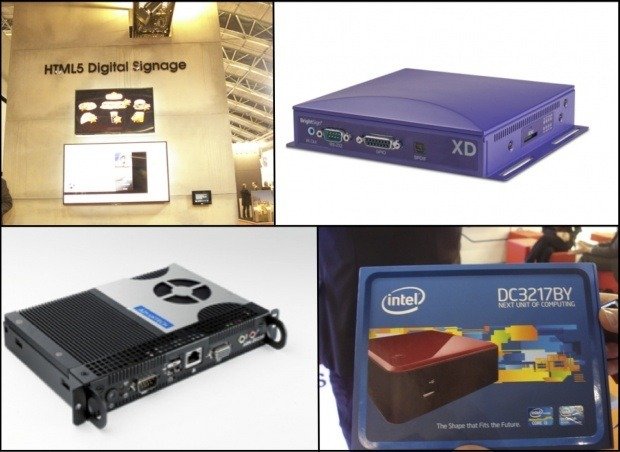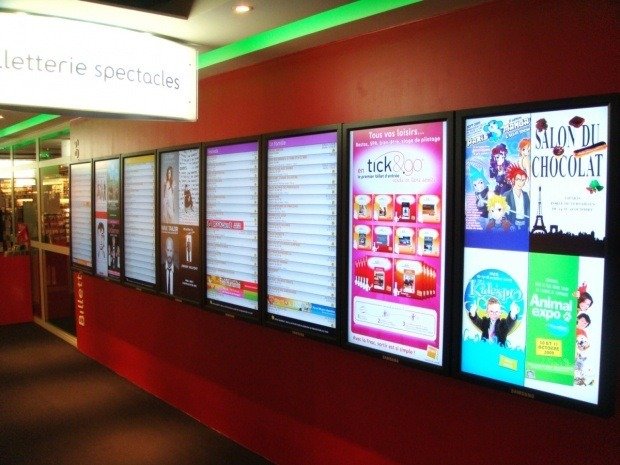 Display products such as PsCo’s hyperwall have put digital signage companies at the fore of 4K development
Display products such as PsCo’s hyperwall have put digital signage companies at the fore of 4K development
4K is undoubtedly expanding. Video production houses welcome the format and, even if they often have to use down-converters from 4K to HD, the image quality is still better than what can be captured via HD. Most video camera manufacturers have already launched 4K cameras and creative advertising agencies are adopting it in an attempt to future-proof their work.
Sony’s latest professional monitors, the PVM-A250, 25″ (60cm) and PVM-A170, 17″ (43cm), have been designed to be 4K ready. Using organic LED (OLED), these lightweight, slim screens have high colour accuracy, contrast and picture quality.
“Higher resolution content creation – 4K and beyond – requires monitors with larger screen sizes for accurate colour evaluation on site,” says Daniel Dubreuil, senior product marketing manager for professional monitors at Sony Europe. “Yet bigger monitors are harder to carry and take up more space. These new models have the screen size needed for critical evaluation, with a thinner and lighter design that’s perfect for live broadcast and outdoor shooting. They even have a handle for easy carrying.”
Danish broadcast production start-up Nimb TV has recently unveiled Denmark’s smallest Ultra HD Outside Broadcast van. The unit is built around a number of Blackmagic Design’s raft of Ultra HD products, which includes the ATEM Production Studio 4K and Blackmagic Audio Monitor. Housed in a three-wheeler moped van, it can be positioned at the heart of any live production, not simply feature films. But it is not necessarily the broadcast market that is paving the way forward in 4K.
“The AV and digital signage markets are leading on Ultra HD, 4K adoption,” believes Patrick Hussey, senior communications manager for EMEA at Blackmagic. “Meanwhile, the broadcast industry is, for once, playing catch up.”
Stuart Holmes, chief executive at AV distributor PsCo, corroborates this: “In the professional AV world, 4K or Ultra HD is nothing new; it made huge waves at CES and is now one of the latest buzzwords in the consumer market. Consumer expectations of image quality are through the roof as they compare the fine detail they get on their tablets, smartphones and home TV sets to displays they come across daily in the out-of-home world.
“As experts in videowalls, targeting vertical markets such as broadcast, public sector, retail, rental and corporate, we understand 4K and, from a multi-display angle, we have been delivering videowalls with higher than 4K resolutions for a long time. Our focus has always been more on delivering according to the required display size, shape and pixel by pixel performance required for a specific environment.”
In the AV manufacturing sector, the projector industry leads the way on 4K, particularly for 3D applications. Some manufacturers are already claiming they use 8K, although most of the time that means two 4K projectors, which gives better definition, but not at 8K standard.
In the residential market there are 55″ (140cm) 4K screens available for under £4,000, but in the professional market this quality of screen is not so widespread. Many LED manufacturers say that their HD screens are 4K ready, they just need the content to match. That said, there are plenty of HD DOOH screens already on the streets and, if the image is already fit for purpose, then why change them?
French creative company MovingDesign, which designed the amazing 4Temps mall in Paris, says that its clients are not worried about definition as long as it looks good, while Monster Media has made similar noises concerning 4K. However, BrightSign’s XD line software and firmware upgrade to support and upscale into 4K would indicate that the format is coming to DOOH. The company’s BrightAuthor 3.7 software and its companion 4.7 firmware XD can upscale 1080p video content to 4K and offers enhanced IP streaming and some very useful HTML5 support features. 4K-display manufacturer Seiki Digital recently demonstrated the impact of BrightSign’s XD video engine, paired with the new software features, at the IFA trade show in Berlin.
4K is a technology that is relevant to large videowall displays, rather than close-up screens. For screens that are used for interaction or large displays, such as roadside billboards, 4K is irrelevant. In cases where flat-panel displays are used to create large videowalls, the better the definition, the more eye-catching and effective the signage will be, so expect to see more 4K making its way into the DOOH market.




